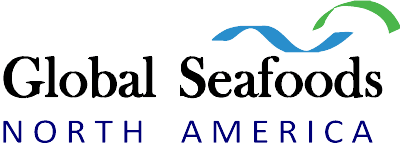Hamachi Fish Sustainability: A Guide to Responsible Sourcing

Hamachi Fish Sustainability: A Guide to Responsible Sourcing
Hamachi fish, also known as yellowtail (Seriola quinqueradiata), is a prized delicacy in Japanese cuisine, particularly in sushi and sashimi dishes. As demand for this delicious fish continues to grow worldwide, concerns about Hamachi fish sustainability have also risen. Sustainable sourcing of Hamachi is essential to protect marine ecosystems and ensure that future generations can continue to enjoy this beloved fish.
In this guide, we'll explore the sustainable farming of Hamachi, the best farming practices, and how to choose responsibly sourced Hamachi.
Why Sustainable Hamachi Farming Matters
As overfishing threatens global fish stocks, aquaculture (fish farming) has become an important alternative. Hamachi is primarily farmed rather than wild-caught, making responsible aquaculture practices crucial for sustainability.
Benefits of Sustainable Hamachi Farming:
✅ Reduces Pressure on Wild Populations – Farmed Hamachi decreases the demand for wild-caught fish, helping to conserve wild stocks.
✅ Minimizes Environmental Impact – Properly managed farms implement waste management and avoid excessive antibiotic use.
✅ Ensures High-Quality, Healthy Fish – Sustainable farms focus on fish health, reducing disease risks and improving product quality.
✅ Supports Local Economies – Sustainable aquaculture provides jobs and boosts the seafood industry in coastal regions.
Where is Hamachi Farmed?
Hamachi is primarily farmed in Japan, with additional farming operations in South Korea, Taiwan, and Australia. These regions offer optimal water conditions and sustainable aquaculture techniques that maintain healthy fish populations while minimizing environmental impact.
Leading Hamachi Farming Regions & Producers
🌊 Japan: The Heart of Hamachi Farming
Japan is the world’s largest producer of farmed Hamachi, with Seto Inland Sea and Kagoshima Bay being the primary farming areas.
Top Japanese Hamachi Producers:
🔹 Maruha Nichiro Corporation (Ehime Prefecture, Seto Inland Sea)
- Implements advanced monitoring to ensure water quality.
- Uses sustainable fishmeal alternatives to reduce pressure on wild fish stocks.
🔹 Kagoshima Aquaculture (Kagoshima Prefecture, Kagoshima Bay)
- Low-density stocking to reduce disease outbreaks and stress on fish.
- Uses natural feed to enhance the quality and taste of Hamachi.
🔹 Nippon Suisan Kaisha (Nissui) (Kagawa Prefecture, Seto Inland Sea)
- Waste management systems prevent water pollution.
- Uses open-sea cages, allowing natural water flow and healthier fish growth.
🌊 South Korea & Taiwan: Expanding Hamachi Aquaculture
🔹 Jeju Fisheries Cooperative (Jeju Island, South Korea)
- Operates open-sea farms in pristine waters to ensure high-quality fish.
- Prioritizes eco-friendly farming by avoiding overcrowding and minimizing antibiotic use.
🔹 Chung Hwa Pingtung Fisheries (Pingtung County, Taiwan)
- Employs Integrated Multi-Trophic Aquaculture (IMTA) to maintain ecosystem balance.
- Uses large spacious tanks for optimal fish health and sustainability.
Challenges of Hamachi Farming
Not all Hamachi farms operate sustainably. Some unsustainable practices include:
🚫 Overcrowding – High stocking densities can lead to disease outbreaks and increased mortality rates.
🚫 Excessive Antibiotic Use – Overuse of antibiotics can result in water pollution and antibiotic-resistant bacteria.
🚫 Unsustainable Fishmeal – Some farms use wild-caught fish to feed farmed Hamachi, contributing to overfishing.
To avoid supporting harmful practices, consumers should choose Hamachi from farms with sustainability certifications.
How to Choose Sustainable Hamachi
When purchasing Hamachi, look for sustainability certifications to ensure responsible farming practices.
Top Sustainable Seafood Certifications:
✅ Aquaculture Stewardship Council (ASC) – Ensures responsible farming with minimal environmental impact.
✅ Best Aquaculture Practices (BAP) – Covers sustainability, animal welfare, and food safety.
✅ Marine Stewardship Council (MSC) – Certifies wild-caught fish from well-managed fisheries.
📌 Tip: Ask your fish supplier or sushi restaurant about their Hamachi sourcing to make an eco-conscious choice.
FAQs: Everything You Need to Know About Hamachi Sustainability
Is Hamachi fish healthy to eat?
Yes! Hamachi is rich in omega-3 fatty acids, protein, and essential vitamins, making it a nutritious choice. However, like all fish, it contains trace amounts of mercury, so it's best to consume in moderation.
Is Hamachi always farmed, or can it be wild-caught?
While wild Hamachi exists, most Hamachi available in markets and restaurants is farmed to ensure a stable supply and reduce pressure on wild populations.
What are the environmental impacts of unsustainable Hamachi farming?
Unsustainable practices can lead to:
🚫 Water pollution from uneaten feed and fish waste.
🚫 Antibiotic-resistant bacteria in marine ecosystems.
🚫 Overfishing of wild fish used in Hamachi feed.
How can I tell if the Hamachi I’m buying is sustainably sourced?
Look for ASC or BAP certification labels or ask your seafood supplier about their sourcing practices.
Where can I buy high-quality Hamachi?
For premium, sustainably sourced Hamachi, visit:
🔗 Hamachi Tuna Collar
🔗 Hamachi Collar Yellowtail Hot Smoked
Final Thoughts on Hamachi Sustainability
Sustainable Hamachi farming reduces environmental impact, supports responsible aquaculture, and ensures a long-term supply of this popular fish. By choosing Hamachi from certified sustainable sources, you can enjoy your sushi guilt-free while helping to protect ocean ecosystems.
📢 Make an informed seafood choice today! Support sustainability by purchasing responsibly farmed Hamachi from trusted sources.
For more seafood sustainability updates, check out:
🔗 Global Seafoods YouTube Channel
🍣 Enjoy your Hamachi while making a positive impact on our oceans! 🌊
Also in News

How to Make Sea Bream Sushi With Dry-Aged Tuna & Crab Roll — Step-by-Step With Chef Joshua
A complete guide to making Sea Bream sushi at home, including filleting, curing, slicing, and building a Dry-Aged Tuna & Crab sushi roll. Chef Joshua shares professional tips for restaurant-quality results.

Boiled Crab for Game Night: Everything You Need for a Perfect Seafood Party
Take your game night to the next level with a Boiled crab party. Learn the best recipes, cooking tips, and hosting hacks for a memorable seafood feast.

Boiled Crab for Date Night: A Romantic Guide to the Perfect Seafood Feast
Make your next date night unforgettable with a romantic Boiled crab experience. This guide covers everything you need to know, from ambiance to the best crab varieties.
